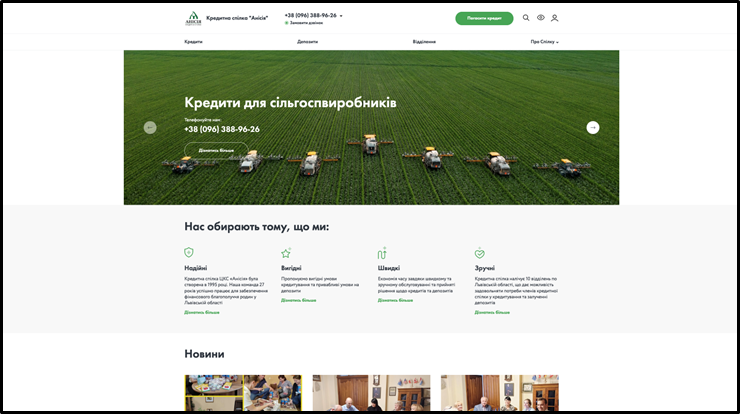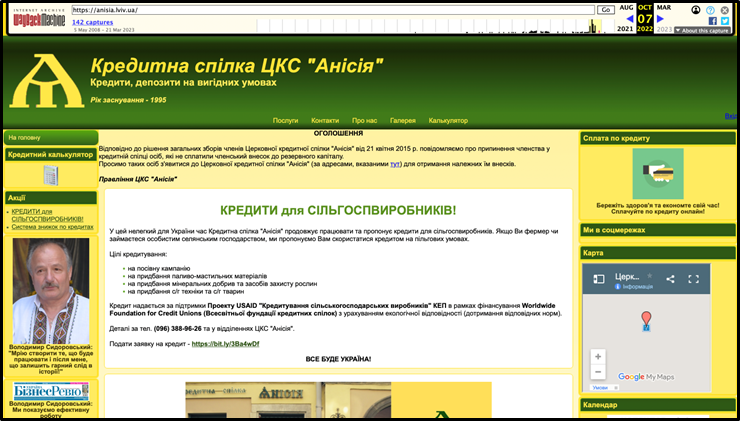Ukrainian Credit Unions Upgrade Websites and Provide Modern Digital Services to Members
2023-04-28World Council’s Credit for Agriculture Producers (CAP) Project in March completed its effort to upgrade the websites of both Ukrainian credit union associations, two central credit unions and 49 individual credit unions in Ukraine.
The new websites replace outdated versions and incorporate modern trends in visualization and content presentation. Critically, they also meet the new regulatory standards for consumer information disclosure as set by the National Bank of Ukraine—the regulator for credit unions in Ukraine. This includes a tailored calculator tool that allows a member to compute the fair price of loans and deposit products.
The websites were designed using WordPress, which offers user-friendly maintenance, an important feature for credit unions with small staff sizes. The platform also allows them to tailor their website content and establish an interface that meets their own aesthetic vision (fonts, color schemes, images and other elements).
Modernizing credit union websites is just one initiative spearheaded by the CAP Project to help digitalize the Ukrainian credit union sector. The ultimate goal is to make credit unions more competitive in the financial services market and help them expand their membership by appealing to younger consumers.
Along with this effort, CAP will continue to support the migration of credit unions to a new modern core banking system, which will open a window of opportunity to launch online lending and payment services in credit unions.
This post originally appeared on World Council of Credit Unions' Ukrainian Crisis Response blog.

